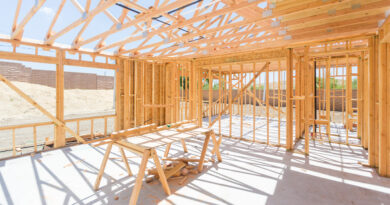Locked in by Low Mortgage Rates, Homeowners Flock to HELOCs
Homeowners are opting to utilize HELOCs for home updates rather than move.
According to U.S. News & World Report, homeowners who want to move face the unpleasant prospect of trading in an old low-rate mortgage for a new higher-rate mortgage. This dilemma is known as the lock-in effect.
Instead of making an unfavorable financial move, many homeowners have adapted by making renovations to their existing homes. Often, a home equity line of credit can be the key that unlocks this option.
What Is the Lock-In Effect?
The lock-in effect results from homeowners with low mortgage rates facing the prospect of having to get a new mortgage at today’s higher interest rates if they move. That potential financial disadvantage effectively locks them into their current homes.
To understand the power of the lock-in effect, take a look at how mortgage rates have changed in recent years.
Thirty-year mortgage rates ranged around the 3% to 4% range for most of the decade from 2010 to 2020. They even reached an all-time low of 2.65% at the beginning of 2021. Soon after that, things began to change drastically.
Thirty-year mortgage rates rose steeply beginning in 2022, topping out at 7.79% in October 2023. Even with a recent drop, they remain above 6%.
This means that some people who bought a house during the low interest rate period could see their mortgage rates soar if they moved now.
For example, imagine a couple who bought a home shortly after getting married in mid-2016, when mortgage rates were 3.48%. Eight years later, they now have three kids and would like to move to a bigger home.
The problem is, if they moved now, they’d have to sign on for a mortgage of around 6.5%. That 3% increase in their mortgage rate would eat into the amount they could put toward a new home. The potential financial burden could effectively lock them into their current home.
This has become a widespread problem. With interest rates now around 6.5% and 89% of mortgages outstanding having rates below 6%, the vast majority of people with a mortgage now face this financial obstacle to moving.
A working paper by the Federal Housing Finance Association estimated that this rise in interest rates cost the housing market 1.33 million sales from mid-2022 through the end of 2023.
One other aspect of mortgage rate history that’s worth noting: Though rates have risen lately, at around 6.5% they are still a full percentage point below their 50-year average. So, if you’re waiting for a return of the 3% rates from a few years ago, don’t hold your breath.
As Kyle Enright, president of Achieve Lending, points out “we know that the Federal Reserve may cut rates this year. Even so, the ultralow mortgage rates we saw a few years ago won’t be back anytime soon.”


